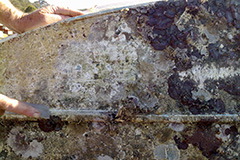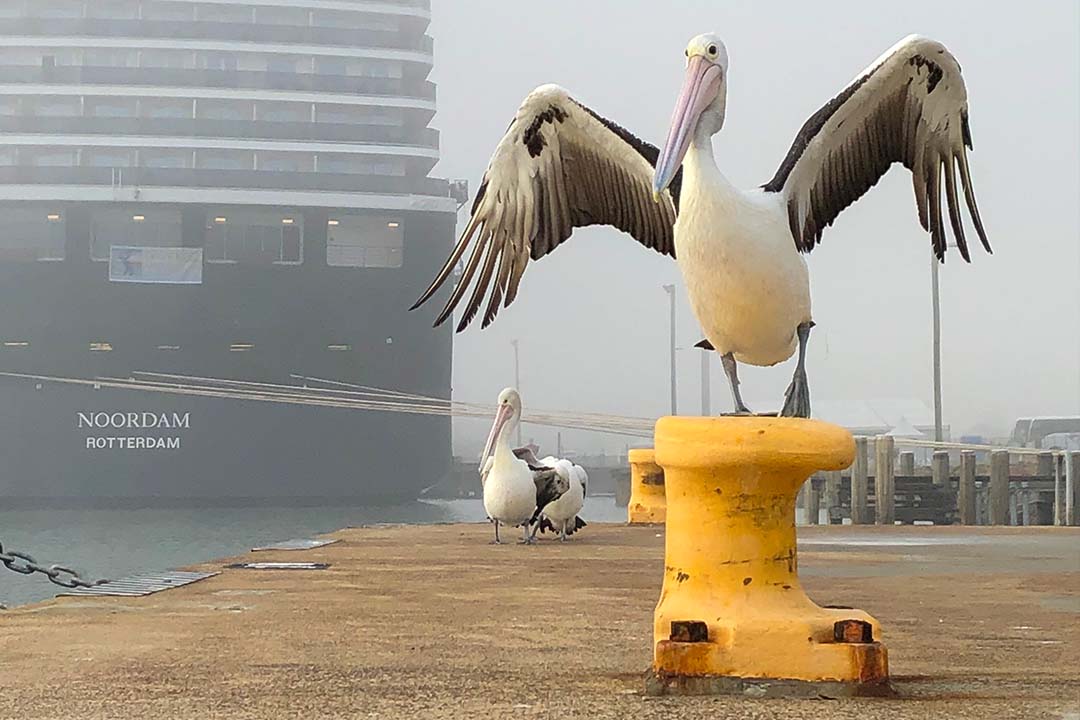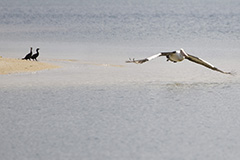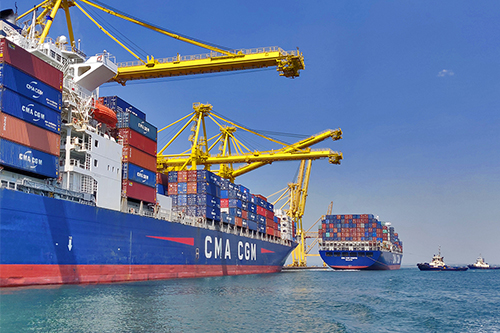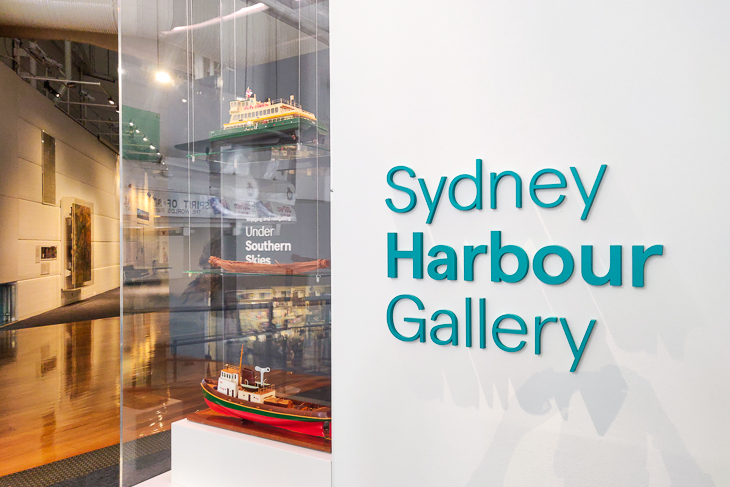Marine pests
Introduced species are able to invade NSW marine waters in a number of ways including through hull fouling and discharge of ballast water (see below). The ports of Sydney Harbour (Port Jackson), Botany Bay, Port Kembla, Newcastle and Port of Eden contain several introduced marine taxa.
Many of the introduced species do not appear to have an ecological or economic impact. Of the exotic species found in NSW waters, only a few are on the current schedule of key marines pests targeted in Australia.
Ports in NSW have known occurrences of the following marine pests species including:
- Aquarium caulerpa (Caulerpa taxifolia)
- New Zealand screw shell (Maoricolpus roseus)
- European fan worm (Sabella spallanzanii)
- European green shore crab (Carcinus maenas)
A map of all marine pest species known in NSW is here
Non-native marine pests can be introduced to Australian shores within ship ballast water and on ship and boat hulls (biofouling). Marine pests can detrimentally affect marine ecology, fisheries and tourism and so present both a biodiversity and economic risk to NSW.
Getting rid of introduced marine pests once they have established is extremely difficult, if not impossible.
To help manage the risks, Port Authority is an active member of the NSW Marine Pests Working Group with representatives from Department of Primary Industries, Environment, Energy and Science, Department of Planning, Industry and Environment, Transport for NSW and the private port organisations of NSW Ports and Port of Newcastle.
Ballast water
All arriving international vessels are required to manage their ballast water in accordance with the Australian ballast water management requirements, which provide guidance on how vessel operators should manage ballast water when operating within Australian seas in order to comply with the Biosecurity Act 2015. They also align to the International Convention for the Control and Management of Ships’ Ballast Water and Sediments 2004 (the Ballast Water Management Convention), which entered into force internationally on 8 September 2017. The Department of Agriculture provides further information to assist operators comply with the requirements.
These arrangements will be consistent with the International Maritime Organization’s International Convention for the Control and Management of Ships' Ballast Water and Sediments, which Australia has signed and entered into force in 2017.
Biofouling
Marine pests can also be introduced into the environment via biofouling, which is the accumulation of marine organisms (plants or animals) that attach to objects immersed in salt water (such as vessels’ hulls, ropes, anchors and other equipment).
The risk of marine pests being spread via biofouling can be reduced by incorporating practices that minimise the build-up of biofouling into routine vessel maintenance programs. A 'National Biofouling Management Guidelines for Commercial Vessels' has been developed and provide an important reference for owners, operators, docking superintendents and maintenance contract managers, particularly in the following circumstances:
- Managing biofouling when operating in Australian waters
- Preparing a vessel prior to arrival in Australia (or any other country) to ensure it is free of marine pests on entry
- Developing maintenance contracts that will meet best practice in biofouling management and ensure optimal performance
- Supervising maintenance contractors.
In water cleaning
The ‘Anti-Fouling and In-Water Cleaning Guidelines’ apply to vessels and moveable structures such as pontoons, aquaculture installations and navigational structures. The Guidelines have two parts:
- Part 1 is about application, maintenance, removal and disposal of anti-fouling coatings at shore-based maintenance facilities.
- Part 2 is about in-water cleaning. Where practical, vessels should be removed from the water for cleaning, in preference to in-water operations. However, the guidelines recognise in-water cleaning as an option to remove some types of biofouling, providing the risks are appropriately managed.
Owners and operators wishing to in-water clean in NSW are advised to contact Port Authority and/or the Aquatic Biosecurity Unit of the Department of Primary Industries.
Approval from the relevant State authorities will be required prior to undertaking any in-water cleaning in NSW.
The Commonwealth Department of Agriculture is working to develop a national In-Water Cleaning Standard. The standard will outline the requirements for undertaking in-water cleaning in Australian territory, to ensure the effective management of Australia’s marine biosecurity. This standard would seek to align with regulations in New Zealand and internationally where possible.
For in-water cleaning in Commonwealth waters, please visit the Department of Agriculture.
Pesticide Plan
The Pesticides Regulation 2009 requires public authorities such as Port Authority of New South Wales to prepare a Pesticide Use Notification Plan that outlines how they will notify the community of pesticide applications made for public places under their control.
The Port Authority Pesticide Use Notification Plan describes:
- what public places are covered by the plan
- who regularly uses these public places and an estimate of the level of use
- how and when the community will be informed about pesticide applications in public places (i.e. what notification arrangements will be used)
- how the community can access this plan and get more information
- contact details for anyone wanting more information on the plan.
If you have any questions about the Pesticide Use Notification Plan please contact Port Authority.

